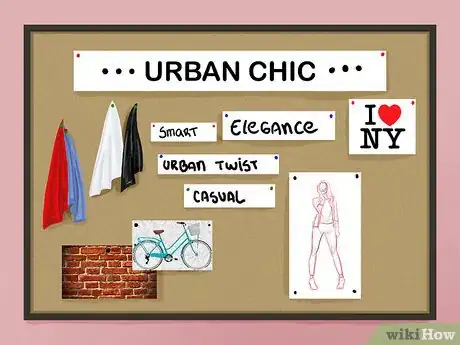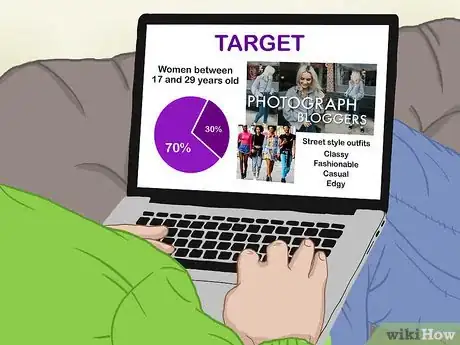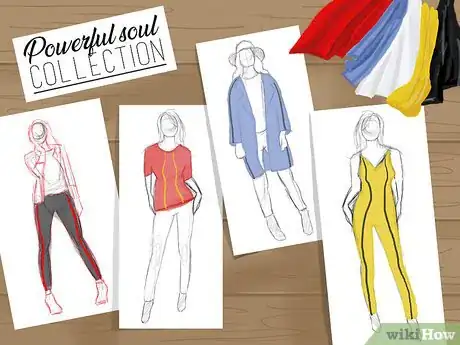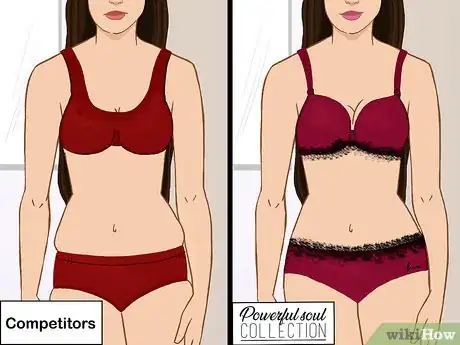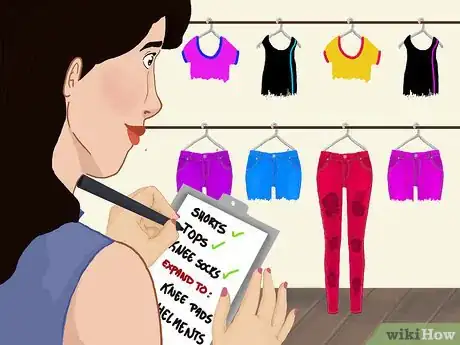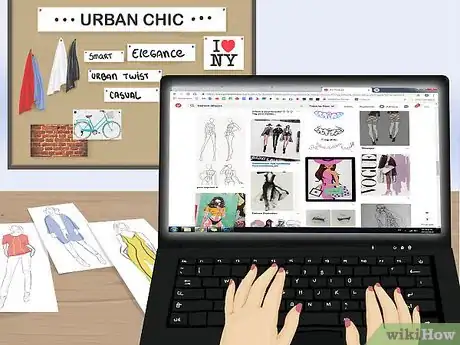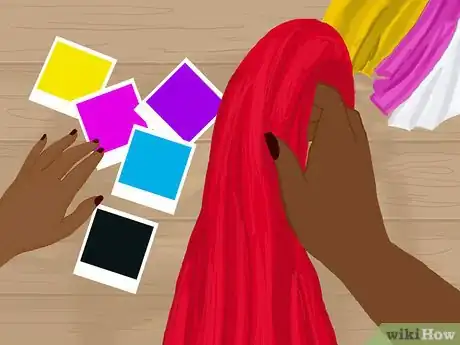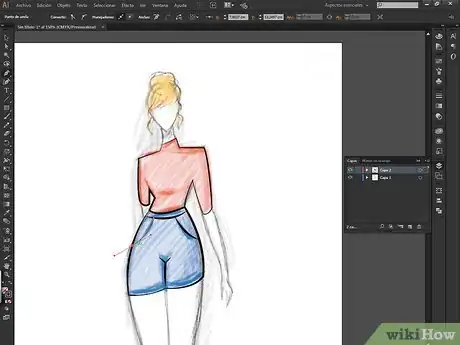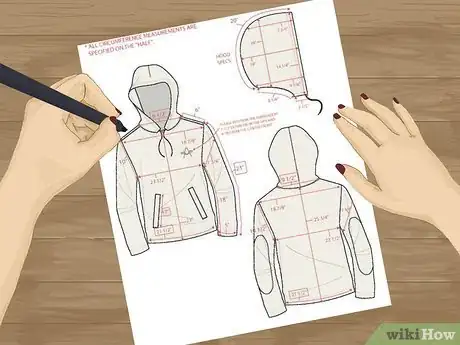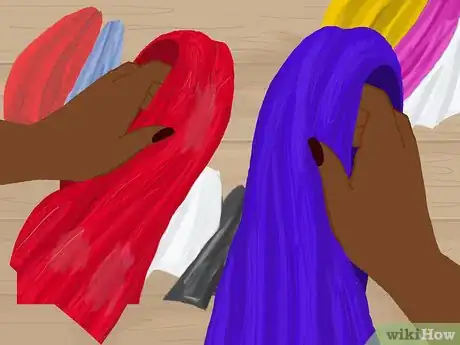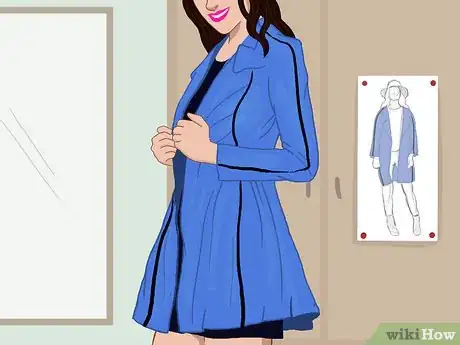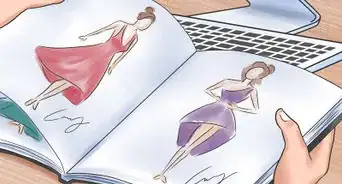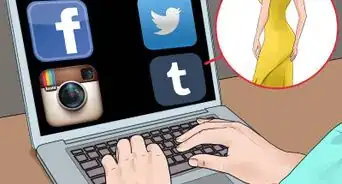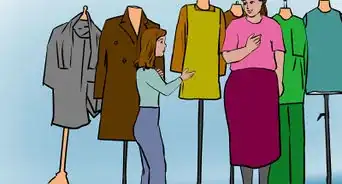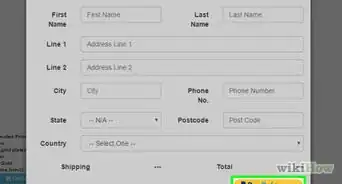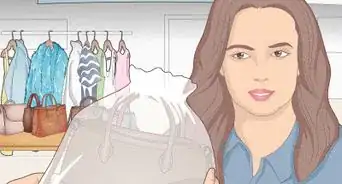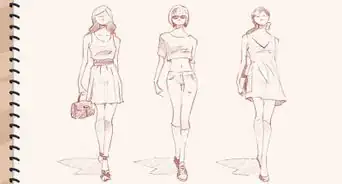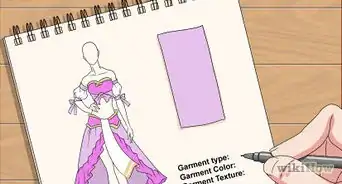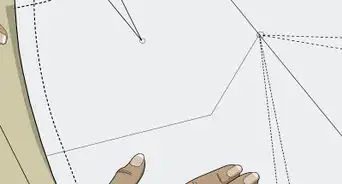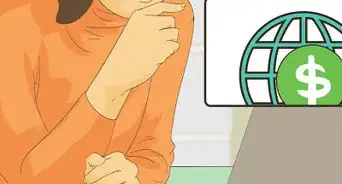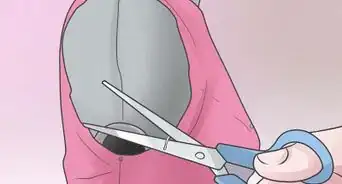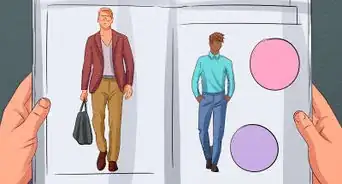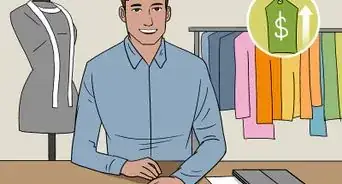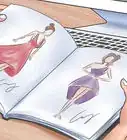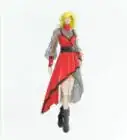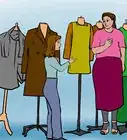This article was co-authored by Christina Santelli and by wikiHow staff writer, Amber Crain. Christina Santelli is the Owner and Founder of Style Me New, a wardrobe styling concierge based in Tampa, Florida. She has been working as a stylist for over six years, and her work has been featured in HSN, the Pacific Heights Wine and Food Festival, and the Nob Hill Gazette.
This article has been viewed 42,839 times.
Designing your own clothing line is an exciting pursuit for fashion-lovers! Start by identifying a specific niche you want to work in, then research your target customers and their needs so you can create clothing that will appeal to them. To ensure that your designs feel cohesive and consistent, spend time brainstorming your concept and style. After creating your concept sketches, transfer the specifics to technical clothing patterns and contact a manufacturer!
Steps
Developing a Cohesive Brand
-
1Choose a niche to specialize in. Since your clothing line will be a reflection of your perspective, spend time thinking about what you want your clothing line to achieve and what needs you want the brand to fill. Avoid vague or generic concepts like “women's clothing” and try to zero in on specific garments.
- For example, if you're a horseback rider and you can't find riding pants that are both comfortable and stylish, you can use your unique perspective to design pants that address those needs.
- If you're a yoga instructor, use your experience and perspective to create apparel that will appeal to other yoga enthusiasts.
-
2Identify your target customers so you can cater to them. Check out fashion blogs, celebrity trends, and industry studies in your niche market to learn more about your target audience and what they want. You can then base your clothing line around unique solutions that fill their needs.[1]
- For example, maybe you want to design apparel for women who play roller derby. You can check out roller-girl fashion blogs and look into what's being worn by famous women and tastemakers in the industry.
- Look into the practical side of things, as well. If there's a demand for stylish knee pads, research sturdy designs and breathable materials.
Advertisement -
3Maintain consistency in your designs and concepts. Create a recognizable personality and look for your brand and keep these elements consistent. This includes color palettes, fonts, your logo, and even little details like stitching and zipper styles. It's important to maintain consistency all the way down to photography and the tone of voice you use in marketing content.[2]
- For example, if your target customers are teenage girls who are into pastel goth fashions, use a color palette that resonates with them, such as pink, purple, and aqua. Create standout characteristics, like pink stitching, for your entire line.
- The tone of your marketing content should also feel youthful and alternative to match the subculture of your customers.
-
4Create an eye-catching logo that reflects your brand and vision. Usually, the most effective logo is a simple one! You can use graphics and typography to speak to your target market and represent your style. Start by sketching your ideas on paper, then use Photoshop or an online logo design tool to create a high-res digital version.[3]
- For example, if your clothing line is bold streetwear or grunge throwback apparel, you wouldn't want to use a rounded font. Choose a font with hard edges and sharp lines, and use all capital letters.
- If you don't feel comfortable designing your own logo, consider collaborating with an artistic friend or hiring a graphic designer.
-
5Find ways to stand out from your competitors. Research who your competitors are and look for needs that they aren't fulfilling for your target market. Once you identify how your competitors are lacking, you can create products that address those needs, which can help you gain visibility over them in the marketplace. Make sure your brand brings something new to the table that no one else offers![4]
- For example, maybe you're designing stylish sports bras for plus-sized women and your competitors are only addressing fit, not aesthetics. Your brand can offer the same (or better) fit in a wide variety of trendy colors and patterns.
Creating Your Designs
-
1Decide exactly what kind of apparel your line will include. You've narrowed down niche and target market, so you probably already have a pretty good idea about what products you plan to offer. At this point, set specific parameters for your initial designs. You can always expand your line of products later when you have more capital and experience, but try to focus your vision in the beginning stages.[5]
- For example, narrow down a roller derby apparel line to include shorts, tank tops, and knee socks. Once your brand takes off, consider expanding to include accessories like knee pads and helmets.
-
2Create a mood board to brainstorm and solidify your concepts. Collect images, photos, designs, colors, fonts, and any other elements that reflect your brand's vision. You can assemble these items in a scrapbook, on a corkboard, with online tools like Pinterest, or with fashion design mobile apps.[6]
- Use your mood board as a source of inspiration as you're designing your pieces and reference it frequently to help you maintain consistency.
- Keep collecting material and expanding your mood board as your designs and products expand.
-
3Choose a color palette to create consistency. Go with colors that make sense with your aesthetic and reflect your customers' style demands. For example, for a line of roller derby apparel, you might choose bright colors like hot pink and aqua and set them against a high contrast white or black backdrop. The colors are energetic, fun, and reflect your customers' style and interests.[7]
- Or, if you wanted a grittier feel, you could go with dark red, black, and gray to appeal to strong, competitive personalities.
- You can also work an accent color into the main theme. For example, you could add an accent color like neon yellow for small details like buttons and stitching.
-
4Sketch out your ideas for each garment on paper. Focus on getting the designs, color, and overall aesthetic down on paper first. Don't worry too much about technical details at this point. Then, continue developing your concept sketches to include construction characteristics like zippers, sleeves, body, hems, and linings.
-
5Convert your sketches to digital format. As your sketches develop, you'll eventually need to transfer them from paper to digital format by using a program like Adobe Illustrator. Digital files will be easier to work from once you start making technical patterns, since patterns need to be clear and geometrically precise.
-
6Develop technical clothing patterns from your digital sketches. Technical patterns are necessary for production and include all of the specifics for a garment, right down to the measurements. If you aren't sure how to create a technical clothing pattern, you can always find a basic commercial pattern and adapt it until you get the hang of the process.
- You can also look into video tutorials, software, and design apps for help with technical pattern-making.
Manufacturing the Clothes
-
1Use high-quality materials for your clothing. As a small start-up, you may not have a huge budget for materials, but try to use the best quality that you can afford. It's important to set a quality standard for your brand, since poor quality is not something that new customers forget. That doesn't mean you can't upgrade to even better materials later, once you start turning a profit, but just focus on what you can afford for now.[8]
- Keep in mind that it's better to create a very limited line of clothes made with quality materials rather than a vast line made with poor materials.
-
2Put together Tech Packs for samples. In order to produce samples, you need blueprints. Tech Packs include technical patterns outlining every last detail—measurements, trims, fabrics, grading, coloring, buttons, etc. You should also include a Cutter's Must list, which is an itemized list of the pattern pieces required to complete each garment.
- You can hire a professional to help you create a Tech Pack, which usually costs between $70 and $400.
-
3Manufacture a small set of samples for testing. You can produce samples yourself or outsource to a samples manufacturer. Base your decision on your current capabilities, skill level, and budget. For example, if you have extra money in the budget and very little experience with sewing, you may want to outsource.[9]
-
4Seek out a factory that you can trust to manufacture the final pieces. If possible, find a manufacturer in your area so you can visit the factory and talk with them on-site. Ask for a list of references or physical samples to evaluate some of their work.[10]
- Make sure the factory is fine with creating small batches, since you'll probably want to start out with a small amount of inventory and work up from there.
- It's not uncommon for young brands to try a few different manufacturers until they find the perfect fit.
Expert Q&A
-
QuestionHow can I find inspiration to start a clothing line?
 Christina SantelliChristina Santelli is the Owner and Founder of Style Me New, a wardrobe styling concierge based in Tampa, Florida. She has been working as a stylist for over six years, and her work has been featured in HSN, the Pacific Heights Wine and Food Festival, and the Nob Hill Gazette.
Christina SantelliChristina Santelli is the Owner and Founder of Style Me New, a wardrobe styling concierge based in Tampa, Florida. She has been working as a stylist for over six years, and her work has been featured in HSN, the Pacific Heights Wine and Food Festival, and the Nob Hill Gazette.
Professional Stylist You can find inspiration for your clothing line in person. Look at what people you know and strangers on the street are wearing.
You can find inspiration for your clothing line in person. Look at what people you know and strangers on the street are wearing.
References
- ↑ https://www.abetterlemonadestand.com/how-to-start-a-clothing-line/
- ↑ https://www.abetterlemonadestand.com/how-to-start-a-clothing-line/
- ↑ https://www.abetterlemonadestand.com/how-to-start-a-clothing-line/
- ↑ https://www.abetterlemonadestand.com/how-to-start-a-clothing-line/
- ↑ https://www.abetterlemonadestand.com/how-to-start-a-clothing-line/
- ↑ https://www.abetterlemonadestand.com/how-to-start-a-clothing-line/
- ↑ https://www.abetterlemonadestand.com/how-to-start-a-clothing-line/
- ↑ https://www.abetterlemonadestand.com/how-to-start-a-clothing-line/
- ↑ https://www.abetterlemonadestand.com/how-to-start-a-clothing-line/
